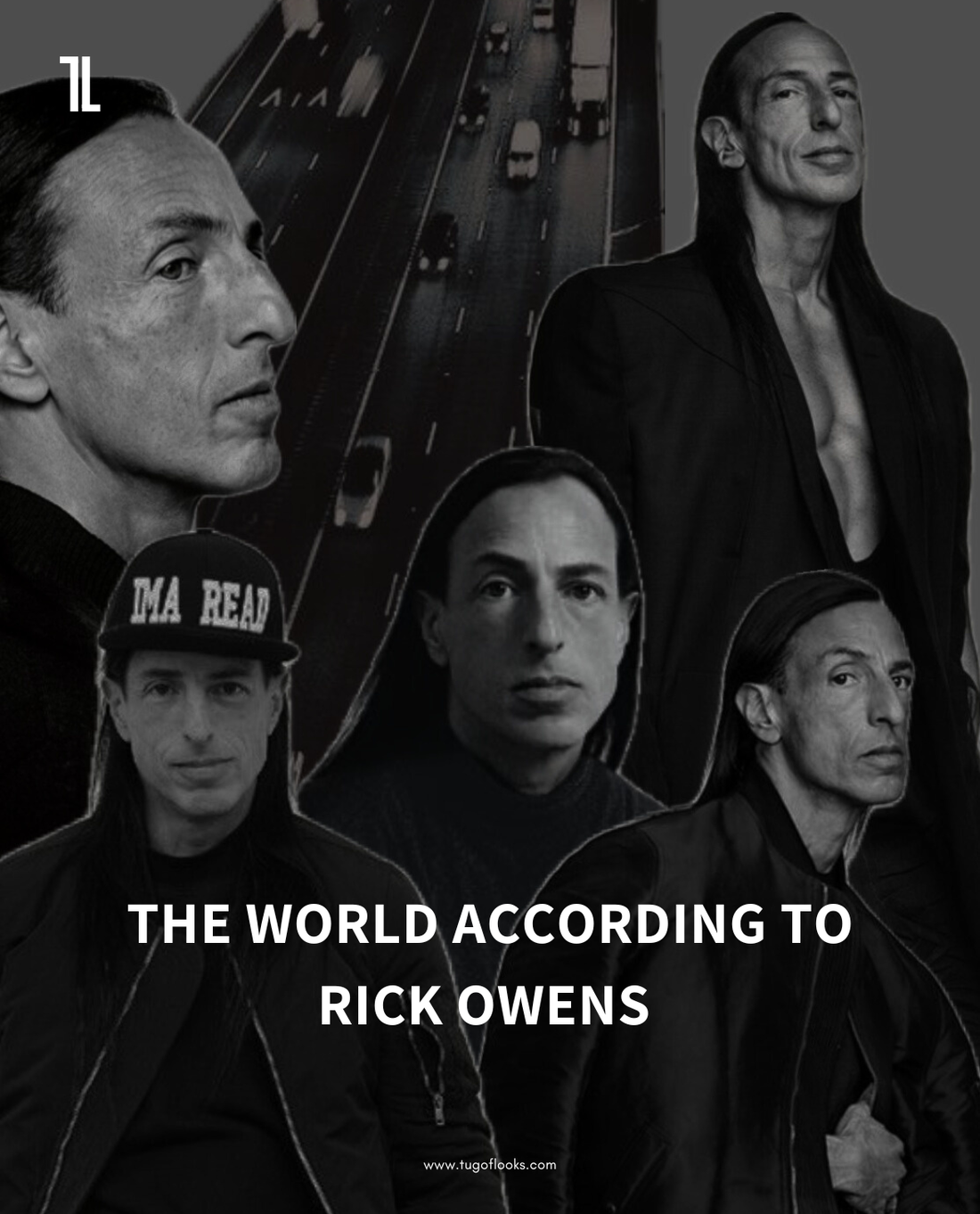
The World According to Rick Owens
In an industry that cycles colours, trends and logos like clockwork, Rick Owens has quietly built a world of his own. A monochrome world, but not just a colour choice. A visual philosophy, a structural language, a signature that carries meaning.
1. Start With Form
Owens rejects the fashion treadmill of “new colour every season, new logo, new buzz-piece.” Instead, his pieces are about silhouette, drape & proportion. He says his work is similar to sculpture.

Whether an oversized hood, elongated body, slouching leather or low-crotch trousers, the focus is on how the body moves through the garment, or the garment frames the body. Rick has shaped a visual language that feels almost separate from the rest of fashion. Quite literally a world operating on its own terms.
2. Silence the Brand
One of the loudest things about Rick Owens is that there’s almost no branding. No big lettering, no loud labels. The absence of branding becomes a subject in itself.

When you remove the “look-at-me” logo, the design itself speaks louder. It forces you to pay attention to why a piece was made and not just what it is. When branding disappears and colour quiets, the question shifts from “What am I wearing?” to “Who am I inside the frame this clothing creates?”
3. Monochrome but with Movement
Yes, Owens uses a tight palette. While the wider industry cycles through colour palettes, nostalgic revivals and micro-trends, Owens has stayed almost monastically committed to a narrow spectrum: black, ash, dust, bone. Not just as aesthetic minimalism, but as a means of removing distraction. Colour can flatter; monochrome forces you to face the shape — the silhouette, the posture, the stance.

Nothing hides. And in that refusal to hide, a different kind of identity emerges.
But the palette is only one layer. The real story is in texture and volume. Leather, jersey, raw denim, waxed cotton, all treated in ways that add depth.
For example: a black leather jacket isn’t just “black leather jacket”. It’s thick, worn-in, cut to hang a certain way, maybe with subtle asymmetry. The colour becomes a backdrop for the gesture.
4. Rebellion & Ritual
Owens’ style isn’t “streetwear” in the classic sense, but it borrows from underground, subcultural, even ritualistic aesthetics. He talks about “us vs them”, about rejecting conformity.

His shows have been described as dark, industrial, almost apocalyptic. The clothes act like armour for different realities. When you wear Rick, you aren’t just wearing clothes, you’re adopting a mindset.
5. Architecture & Identity
There’s a real architectural influence in his work: the play of light and shadow, the volume, the structural cuts. Many articles describe his pieces as “building the body”. Owens himself once said he designs the way architects construct buildings: from form, structure, and tension.

His own life—moving from Los Angeles to Paris, immersing in a stripped environment, building his home as an extension of his aesthetic—shows just how deeply the style and identity intertwine.
What you wear in this world is part of your identity. The clothes aren’t decoration but rather a backdrop to who you are. And while some designers ask to be looked at.
Owens invites you to look inward.